Published in the Ocean Watch column, Honolulu Star-Advertiser © Susan Scott
June 8, 2015
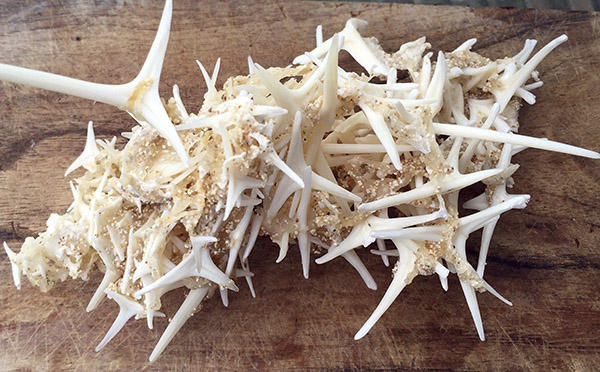 Porcupinefish — related to puffer fish — improve on the defensive adaptation of
Porcupinefish — related to puffer fish — improve on the defensive adaptation of
inflation with pop-out spikes. These were found on Leeward Oahu’s Maili Beach.
Courtesy Kimberly Coffee-Isaak
A photo arrived in my inbox recently with a note from Kaneohe reader Richard, whose friend Kimberley found an object on Waianae’s Maili Beach that baffled them both. Richard wondered whether I knew what it was.
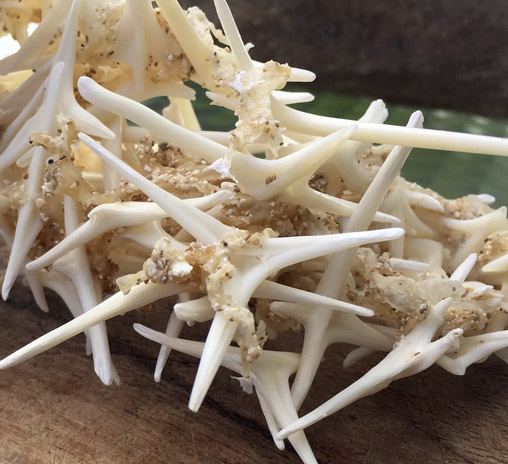 Courtesy Kimberly Coffee-Isaak
Courtesy Kimberly Coffee-Isaak
I did, but not from my Hawaii experiences. While exploring the Sea of Cortez (Gulf of California), I found the white spikes so common on Baja’s desert beaches that I often wore shoes to protect my feet. The little spears were in all stages of decay, from newly dead to Kimberley’s wad of spines held together only by dried skin. They were porcupinefish.
Porcupinefish and puffer fish are closely related but have one big difference. When threatened, both family members puff up with water in hopes of making their bodies too big for a predator to swallow. But the well-named porcupinefish have added security. Embedded in their skin are sharp, 1- to 2-inch-long spines.
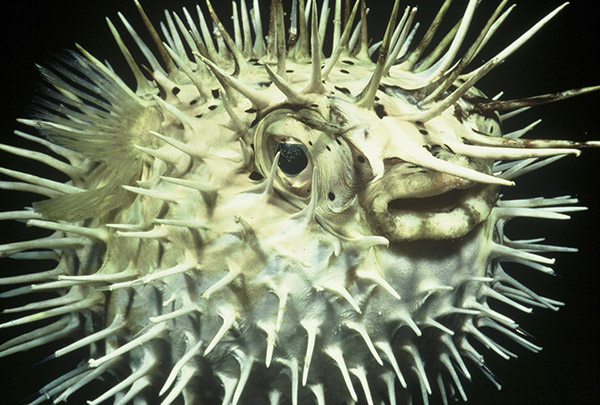 Porcupine fish.
Porcupine fish.
Courtesy David Schrichte.
Porcupinefish spines lie flat against the fish’s body. When the fish is threatened, though, it inflates its body with water and out pop the spikes.
One kind of porcupinefish is called a burr fish because its short spines permanently stand up, like rose thorns. Hawaii hosts one burr fish and two porcupinefish, which can be found throughout tropical waters.
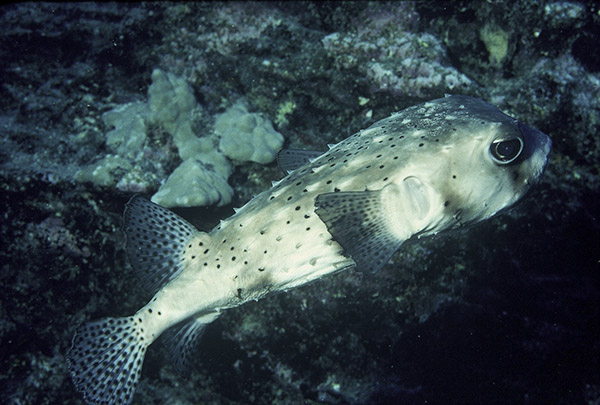 Burr fish.
Burr fish.
Courtesy David Schrichte.
The point of puffing up is to become a ball too big to get down the throat, and spikes on the ball are even more off-putting. But that doesn’t stop some fish from trying. People have found inflated porcupinefish stuck in the throats of dead marlins and tiger sharks.
Porcupinefish and puffer fish have another well-known defense. They carry bacteria that manufacture the nerve poison tetrodotoxin, which the fish store in their skin and organs.
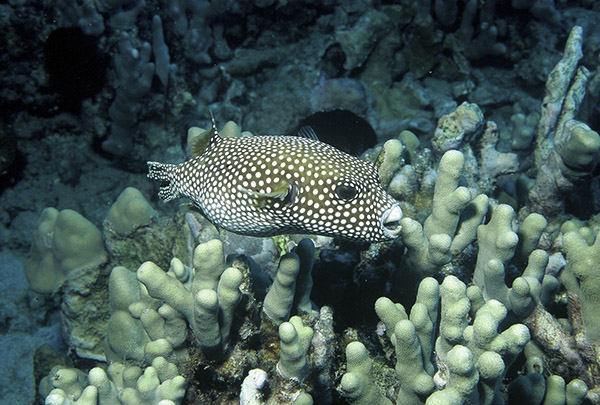 Pufferfish.
Pufferfish.
Courtesy David Schrichte
Puffer fish nerves aren’t susceptible to tetrodotoxin, nor are the nerves of their main predators, sharks and billfish. The poison works on other species, though. Tetrodotoxin sometimes kills people who eat the Japanese puffer fish dish called fugu.
If all else fails, porcupinefish bite with the efficiency of a guillotine using two razor blade-type teeth, one upper, one lower. Porcupinefish have bitten off the fingers of several Hawaii fishermen and divers who dared to come too close.
Porcupinefish balloon out by sucking water in, and they also blow it out. Their strong water jets uncover meals of snails, crabs and shrimp buried in the sand.
I can’t answer Kimberley’s question as to how it happened that this was all that was left of the fish on the beach. I’m just glad she spotted the long-dead puffer fish before stumbling foot-first onto its spines.